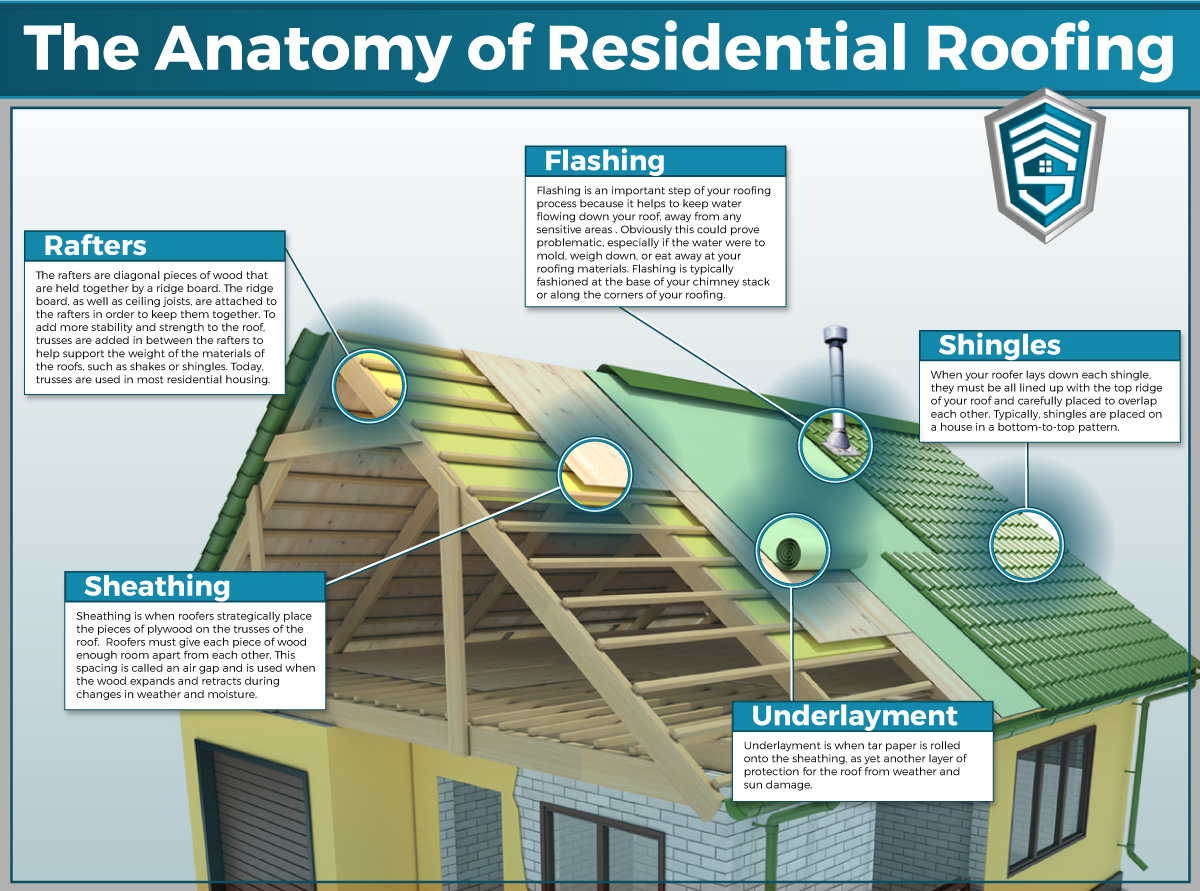Overlooking Roof Air Flow Can Sustain High Costs Out Of Commission; Understand The Essential Elements That Make Sure Correct Setup And Secure Your Economic Rate Of Interests
Overlooking Roof Air Flow Can Sustain High Costs Out Of Commission; Understand The Essential Elements That Make Sure Correct Setup And Secure Your Economic Rate Of Interests
Blog Article
Produced By-Kehoe Rosa
When you're taking on a roof covering job, you could not assume much regarding roofing system air flow, however it's more crucial than you recognize. Effective air flow helps manage temperature level and moisture in your attic, stopping issues like mold and structural damage. By recognizing just how to design and mount a balanced ventilation system, you can boost power performance and prolong the lifespan of your roof materials. So, what are the crucial aspects to take into consideration throughout installment that can make all the distinction?
Value of Roofing System Air Flow
Roof covering air flow plays an important duty in keeping the total wellness of your home. By permitting fresh air to circulate through your attic room, it assists control temperature level and wetness degrees. This equilibrium is vital to avoid warm build-up throughout warm months, which can lead to boosted power prices as your a/c works overtime.
Moreover, proper air flow dramatically reduces the threat of moisture-related concerns like mold and mildew and mold. If gutter san antonio climb, your home's structural integrity can be endangered, causing pricey fixings. simply click for source would not intend to take care of decaying timber or warped roof covering materials, right?
In addition, appropriate air flow extends the life expectancy of your roofing system. When heat and moisture are kept in check, your roofing system can do ideally, protecting against premature wear and tear. This suggests less migraines and costs down the line.
How Roofing System Air Flow Works
Effective roofing ventilation depends on the all-natural motion of air to create a balance between intake and exhaust. When you install vents, you're basically permitting fresh air to enter your attic room while enabling hot, stale air to run away. This process aids control temperature level and wetness degrees, preventing issues like mold and mildew development and roofing system damages.
Intake vents, typically found at the eaves, attract awesome air from outside. Meanwhile, exhaust vents, located near the ridge of the roof covering, allow hot air increase and departure. The distinction in temperature develops a natural airflow, known as the stack impact. As cozy air rises, it develops a vacuum cleaner that draws in cooler air from the reduced vents.
To optimize this system, you need to guarantee that the consumption and exhaust vents are correctly sized and positioned. If siding design ideas 210 is restricted, you will not accomplish the preferred air flow.
Likewise, not enough exhaust can trap warm and moisture, resulting in possible damages.
Trick Installation Considerations
When setting up roofing system air flow, a number of key considerations can make or damage your system's effectiveness. First, you need to assess your roofing system's style. The pitch, shape, and materials all influence air flow and ventilation choice. Make sure to pick vents that fit your roofing system type and neighborhood environment problems.
Next off, take into consideration the positioning of your vents. Ideally, you'll want a balanced system with intake and exhaust vents placed for optimal air flow. Area intake vents low on the roof and exhaust vents near the peak to encourage a natural flow of air. This setup helps avoid wetness build-up and advertises energy efficiency.
Do not forget about insulation. Correct insulation in your attic prevents heat from leaving and keeps your home comfy. Make certain that insulation does not block your vents, as this can impede airflow.
Lastly, consider maintenance. Pick air flow systems that are simple to access for cleansing and inspection. Routine maintenance guarantees your system remains to operate effectively in time.
Final thought
Finally, roofing ventilation is important for an effective installment. By making sure appropriate air flow, you can protect against warm build-up and dampness concerns that lead to expensive damage. When you strategically position consumption and exhaust vents, you enhance power efficiency and prolong the lifespan of your roof covering. Remember, a well-ventilated roof covering not only protects your financial investment yet additionally improves your indoor air high quality. So, focus on air flow to make certain a resilient and cost-effective roofing system for your home.
